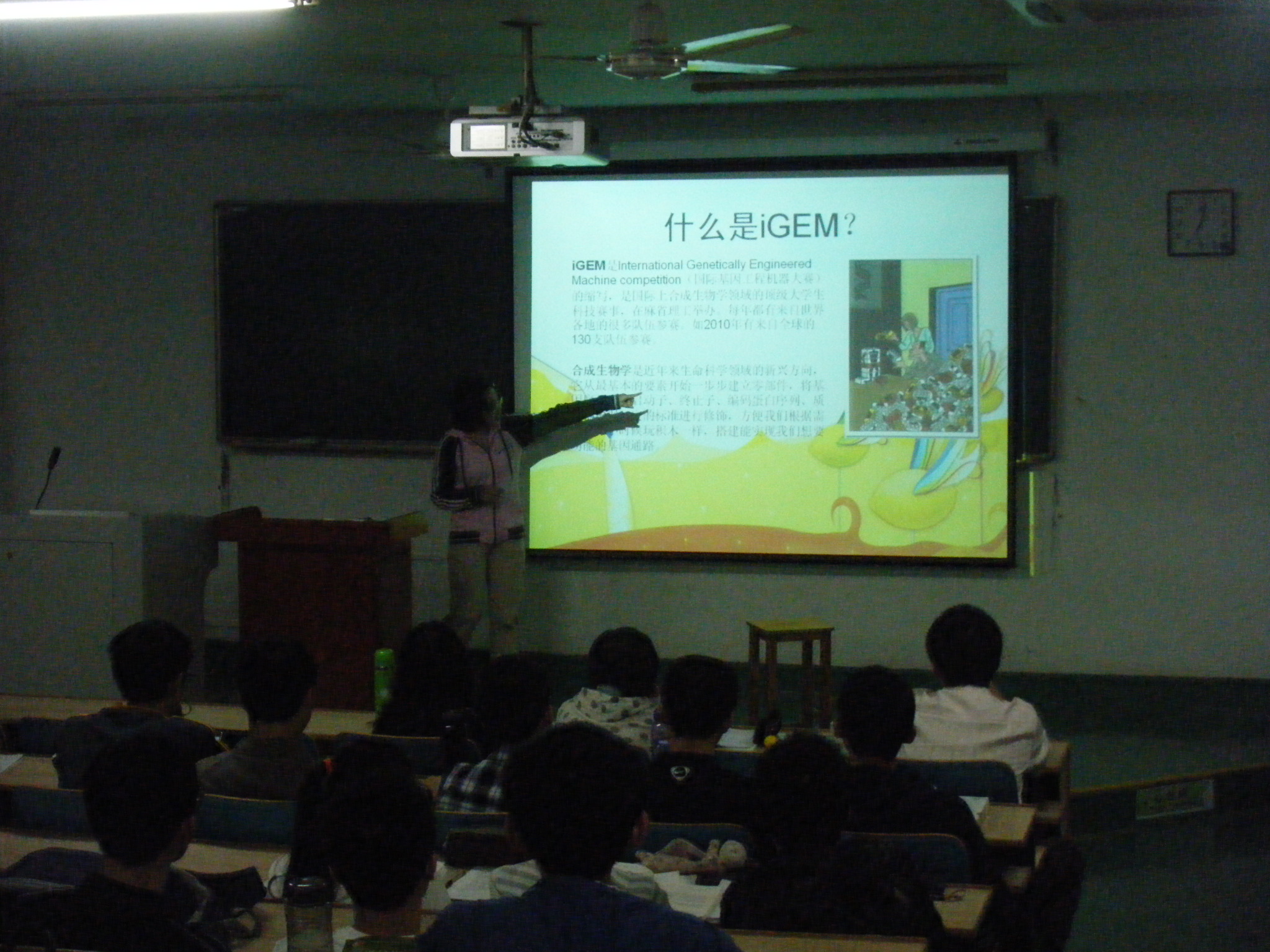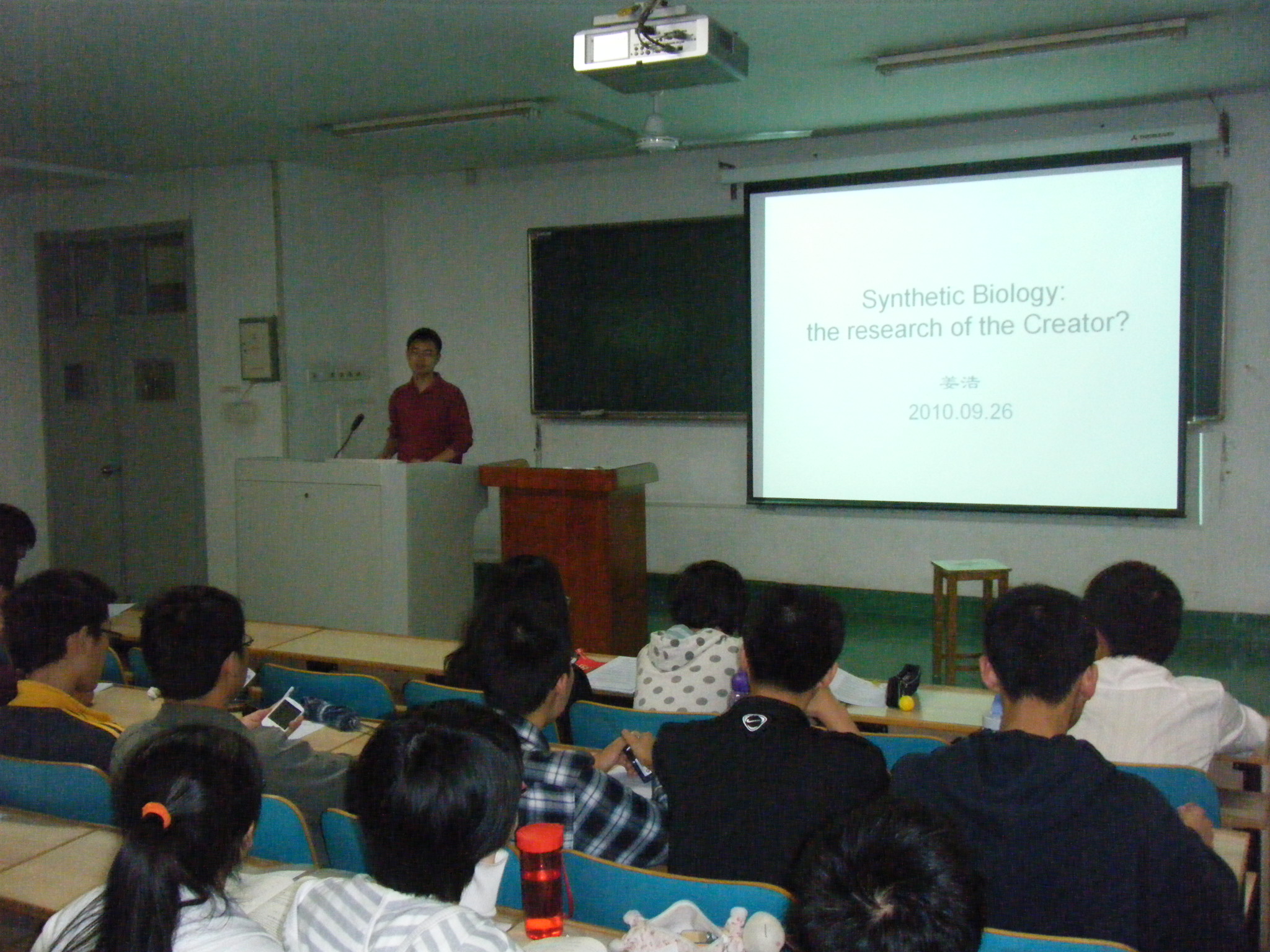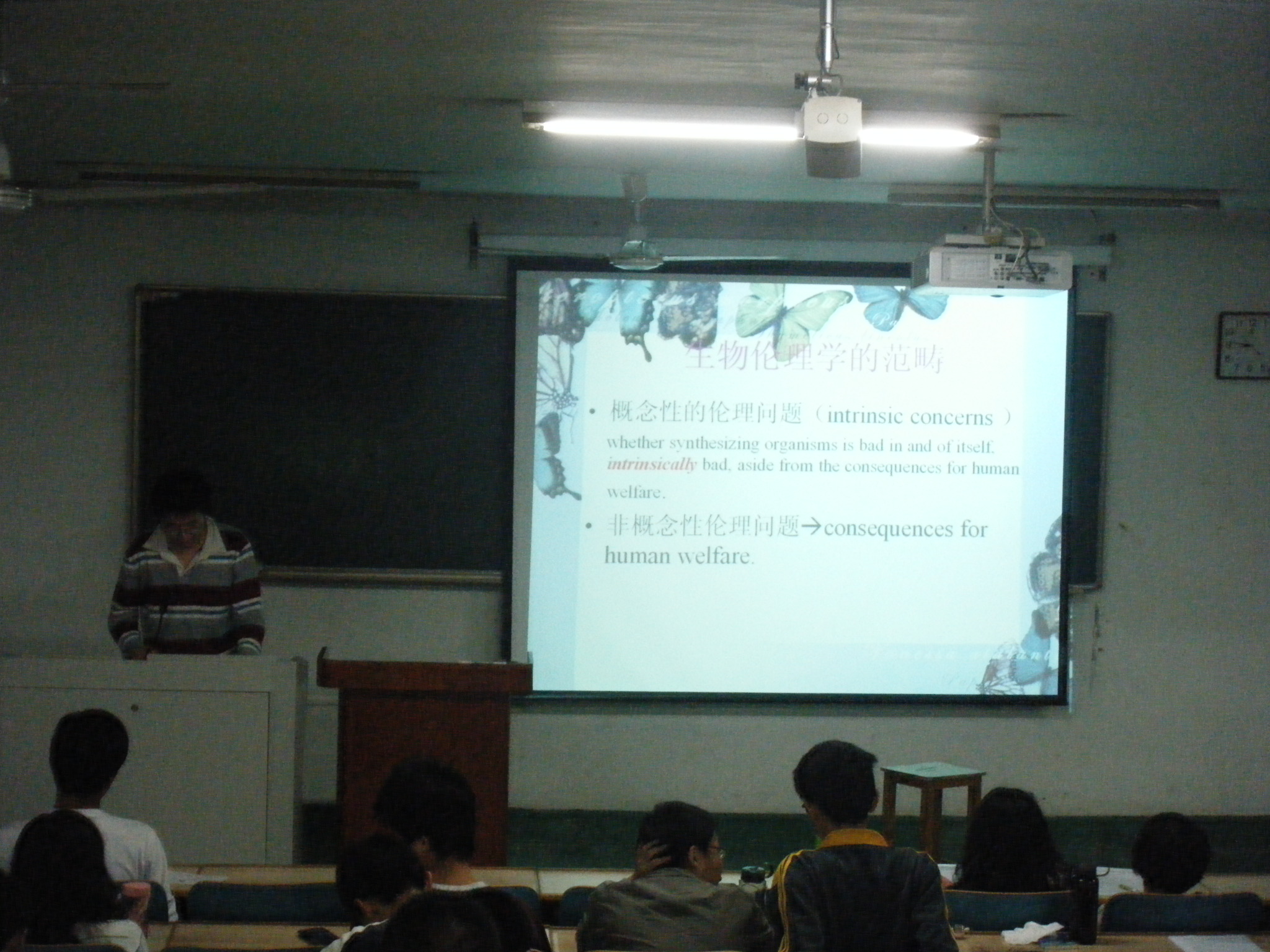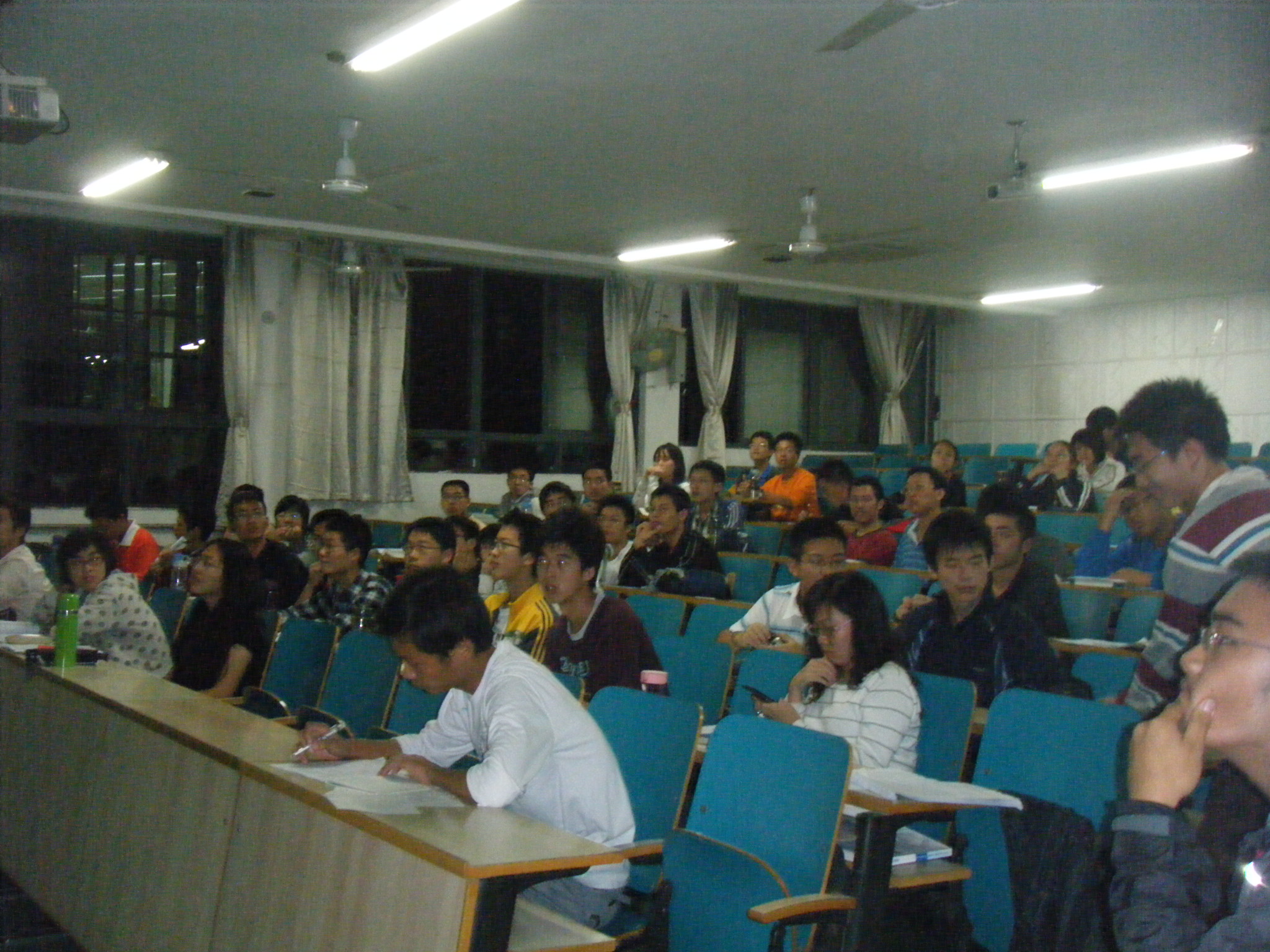Team:USTC/Project/publicize
From 2010.igem.org
Overview of the Compus Talk
Since the birth of the igem team in the University of Science and Technology of China, which participated in the 2007 igem competition, synthetic biology gradually gained recognition in our school. When our fellow schoolmates were conversant of the fresh upcoming event, they were burning with curiosity. Instead of feeling the apprehension over unknown risky possibilities, schoolmates of our age (16~22) focused on the enjoyment and excitement of the unknown and felt no form of hesitation to do it. However, admittedly, technology is a double-edged sword. If not left under responsible hands, the results can be catastrophic.On the other hand, ignorance can also lead in needless anxiety over new things.As students are the hope of our future,it is a pressing issue to convey a thorough understanding of synthesis biology to them. So this year, we, igemers at USTC have decided to organize a campus-wide talk to extend awareness on synthetic biology as well as to instill a scientific and responsible attitude towards it, in our fellow schoolmates.
Part I---What We have Done with Synthetic Biology
In the first part of our talk, we introduced our guests to the world of synthetic biology and informed them the result that we had explored in this area. For the introduction part, we gave a brief description of what synthetic biology is about. Then we presented some of our iGEM previous gold-winning projects, and hopefully by doing so, we can give a good impression to the viewers. Apart from that, we also showed to the guests on some pictures of our lab and what ustc igem team had achieved since we joined this program in 2007. Before the end of the first part, we tried to explain and emphasize on the responsibility that we should take when doing the scientific research, hoping to instill into our guests the scientific and responsible attitude towards synthetic biology.
Part II Synthetic Biology:the Research of the Creator?
The molecular mechanism of synthetic biology was introduced to our guests in this part. Synthetic biology is such a fast developing new discipline that it often calls for creation .Our guests came to understand synthetic biology to much further details in this part.That included the basic concept of biobrick and system ,and some recent advances in synthetic biology. <p>
Part III Bioethics
In the meting, we also introduce basic concept and prevailing view points in the field of bioethics. This section involves why we should consider the issue of bioethics, what the intrinsic bioethical problem is and what the benefits and possible risks of synthesis biology are. The information conveyed to the audience mostly come from the Presidential Commission for the study of bioethics issues. As to the possible risk, we introduce the main principle of risk classification, biosafety issues and the risk of dual use. Besides, we also explain the reason why we should allow the development of synthesis biology, the principle of institutional design and the dynamic process of development and regulation.
Below are the pictures taken during our talks.
igem open day
To further introduce synthesis biology and experimental methods widely used in this field, we carried out our open day in Oct. 10.Around 50 students participated in this event and they were enrolled during the campus talk. The open day included three parts. At first, we introduced the concept of biobrick and the idea of de-coupling, abstracting and modularization. After that, we show our guest around in our lab and introduce our experimental instruments including PCR and gel electrophoresis. At last, we provide detail information to further illustrate our points made in part one including the structure of plasmid and the standard of biobrick assembly. In addition, we sent out questionnaire to see the change of their attitude after they attended our campus talk.
 Our team member is introducing gel electrophoresis imaging system
Our team member is introducing gel electrophoresis imaging system
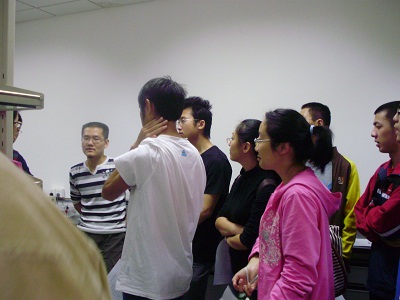 After the introduction, our team member is answering the audience's qustions
After the introduction, our team member is answering the audience's qustions
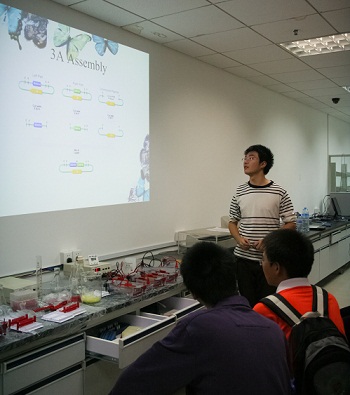 our team member is introducing the 3A Assembly of biobrick
our team member is introducing the 3A Assembly of biobrick
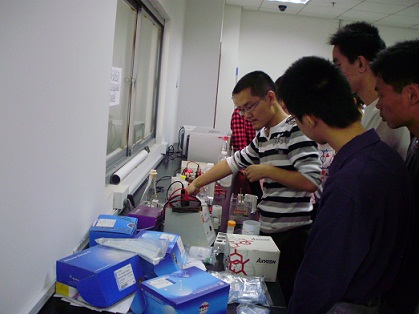 Our team member is introducing gel electrophoresis
Our team member is introducing gel electrophoresis
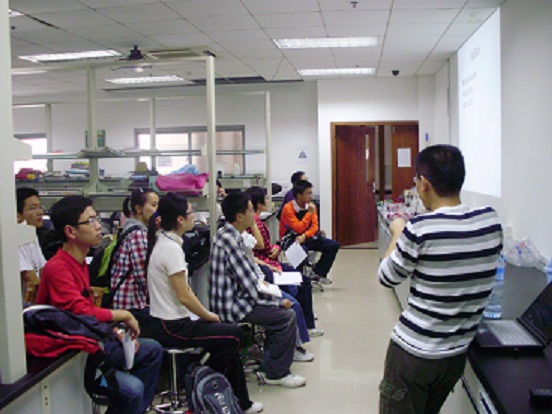 Our team member is introducing the concept of de-coupling in synthesis biology
Our team member is introducing the concept of de-coupling in synthesis biology "
"
